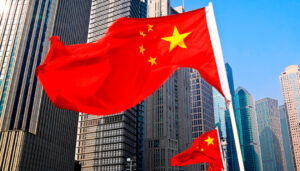
Imports of electric batteries and separators to Ukraine in January–November 2025 increased by 52% compared to the same period last year and amounted to $1.232 billion, according to the State Customs Service.
China remains the main supplier, accounting for $900.2 million (73.2% of the total volume), followed by Vietnam ($96.7 million, 7.9%) and Taiwan ($54.2 million, 4.4%). For comparison, in 2024, China accounted for 83.2% of imports, while the Czech Republic and Bulgaria accounted for 2.8% and 2.7%, respectively.
In November 2025, battery imports grew by 43.6% compared to November 2024, reaching $177.7 million, which is also 22.6% higher than in October.
At the same time, Ukraine exported batteries worth $47.6 million, which is 26% more than a year earlier. The largest buyers were Poland (32.7%), Germany (13%), and France (11.5%).
The increase in imports of battery systems is explained by steady demand from energy companies, telecom operators, and household consumers, as well as the effect of state subsidies for battery imports, approved in July 2024.
By the end of 2024, total imports of batteries to Ukraine had more than doubled to $950.6 million, and in 2025, they continue to grow rapidly thanks to the modernization of the energy system and the development of the market for autonomous power sources.

Ukrainian President Volodymyr Zelensky said that “a weak Russia and a defeated Russia are not beneficial,” so he believes that China is not seeking an end to the Russian-Ukrainian war.
“Of course, China is a strong country with a strong economy, and most importantly in our case, it has influence over Russia, personally over Putin. But with all due respect to the Chinese people, their history, and their culture, we must honestly say that I don’t see how ending this war would benefit China. Why? Because, I think we have read… the new US (security) doctrine… These are two great powers, great economies, and this is a great confrontation. This does not mean that it is a war, it may be any diplomatic or economic confrontation – this is happening. And today, a weak Russia and a defeated Russia in this format is not beneficial to China.
And because of this, honestly, the Ukrainian people are suffering,“ Zelensky said, responding to a question from journalists on WhatsApp on Monday.
Zelensky added that if ”it is not beneficial for China to stop Russia, it means that the war will continue.”
“This does not mean that China directly supports Russia with weapons, but it certainly does not support stopping this war. That is final. Plus, there are various reports from our intelligence services about the supply of machine tools and other items from China to Russia, but I have not been informed of any direct supplies of weapons,” Zelensky said.

On Wednesday, China’s Ministry of Industry and Information Technology, together with a number of other agencies, published an action plan to stimulate consumption and balance supply and demand for consumer goods, outlining key measures, Xinhua reports.
The plan calls for optimizing the structure of consumer goods supply by 2027. Specifically, three consumer sectors worth 1 trillion yuan ($141.2 billion) and ten consumer areas worth 100 billion yuan will be identified.
According to the plan, the consumer sector’s contribution to China’s economic growth will steadily increase until 2030.
In total, the plan includes 19 key tasks, including the comprehensive implementation of AI solutions, increased budgetary and financial support, and the expansion of new product offerings, such as green products.
In addition, it provides for a clearer focus on meeting the needs of different population groups. This applies to expanding the range of products for infants and children, as well as products that are convenient for the elderly, Xinhua notes.

The head of the Taiwanese administration Lai Tsingde on Wednesday announced plans to allocate a special budget of $40 billion for the purchase of weapons, according to the Associated Press. It is noted that this amount, in particular, includes funds for the creation of an air defense “dome”.
“Threats from China to Taiwan and the Indo-Pacific region are increasing (…). Taiwan should demonstrate its determination and take greater responsibility in self-defense,” said Lai Qingde.
It is noted that the Taiwanese administration has requested this tranche separately from the annual defense budget, and this request must now be approved by Taiwan’s legislature.
The Taiwan issue arose in 1949 when the People’s Republic of China was proclaimed and part of China’s Kuomintang Party settled on the island of Taiwan, naming the island the Republic of China on Taiwan. Beijing insists on the “one China principle”, according to which it is impossible to recognize both the PRC and the Republic of China on Taiwan at the same time. At the same time, almost all major states have unofficial cultural and economic offices of Taipei.
Help from Experts Club: the ratio of PRC and Taiwan military capabilities (estimates for 2025)
Based on public estimates (GlobalFirepower, Taiwan’s Ministry of Defense, budget data): Number of active military personnel
China: about 2.0-2.1 million (active NVAC personnel).
Taiwan: nearly 230,000 personnel.
Ratio: about 8-9 to 1 in favor of China.
Reserve and mobilization resource
China: about 510 thousand reservists + large para-military formations.
Taiwan: about 2.3 million reservists with a much smaller population, reliance on a massive reserve.
Air Force (general aviation)
China: about 3,300 aircraft, including about 1,200 fighters.
Taiwan: about 760 airplanes, approximately 280-300 fighters.
Ratio of fighters: about 4-5 to 1 in favor of China.
Navy (warships)
China: about 750 ships and boats, including 3 aircraft carriers, dozens of destroyers and frigates, more than 60 submarines.
Taiwan: about 100 ships and boats, no aircraft carriers, with a limited number of destroyers, frigates and submarines.
Ratio in number of fleet units: about 7-8 to 1 in favor of China, with an even larger gap in total tonnage.
Defense budgets (2025)
China: about $245-270 billion per year according to official figures.
Taiwan: about $20-21 billion (about 2.45% of GDP).
Ratio: China spends more than 10 times more on defense than Taiwan.
These figures are estimates and based on public sources, but generally reflect China’s significant quantitative superiority while Taiwan’s focus on technological saturation, defense doctrines, and alliance with the U.S. and other partners.
Source: https://expertsclub.eu/kytaj-zadiyuye-czyvilni-sudna-v-navchannyah-po-tajvanyu-zmi/

According to Serbian Economist, Chinese company Haitian International is launching pilot production at its new plant in Ruma (Vojvodina, Serbia), creating one of the largest production complexes in the region.
The project involves the construction of a factory with an area of up to 250,000 m² in the Rumska petlja industrial zone.
The initial phase includes approximately 59,000 m² for a production building, office building, and canteen. During the pilot phase, it is planned to produce up to 2,500 Mars and Jupiter series injection molding machines per year.
The total investment is estimated at around €100 million. In the first phase, the plant will employ about 300 people with salaries ranging from €650 to €1,000.
The city administration of Ruma and the Serbian government noted that the project will make a significant contribution to regional industrial dynamics and create new jobs. The plant will enable the Chinese investor to reduce logistics costs and serve the markets of Europe, the Middle East, and India more quickly.
The Serbian authorities consider the Haitian project to be strategic for the industrialization of Vojvodina and strengthening the inflow of foreign investment. The launch of pilot production in Ruma will strengthen Serbia’s industrial cluster and create the conditions for further technological investments.
Haitian International is a major Chinese manufacturer of injection molding machines, presses, and automated equipment. The plant in Ruma will be the company’s first significant production base in the Balkans.
https://t.me/relocationrs/1810